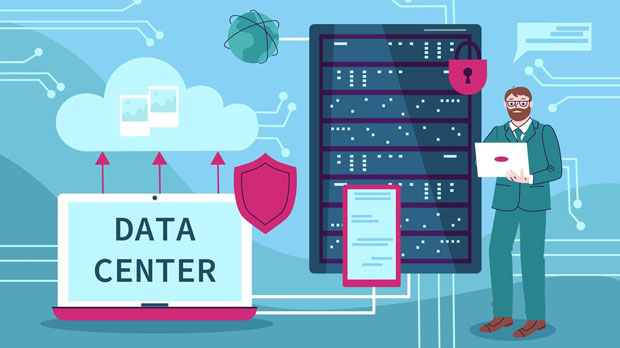When it comes to maintaining a secure and reliable internet connection for businesses or individuals who require constant online presence, choosing the right type of IP address—whether dynamic IP or a dedicated proxy ip—can be a crucial decision. Both dynamic IPs and dedicated proxy ips have distinct advantages and limitations, and understanding which one is more suitable for long-term use depends on the specific needs of the user. Dynamic IP addresses tend to offer flexibility and cost-efficiency, but they may lack the stability required for high-demand tasks. In contrast, dedicated ip proxies provide a more reliable and secure alternative, but they come at a higher cost. This article will explore both options, comparing their features, benefits, and potential drawbacks for long-term use. Understanding Dynamic IP AddressesDynamic IP addresses are assigned by an Internet Service Provider (ISP) and change periodically. This means that each time a user connects to the internet, their IP address may be different. For users with dynamic IPs, the assignment of a new IP address typically occurs after a session ends, or after a fixed period, based on the ISP’s policies.One of the major advantages of dynamic IPs is that they are often more cost-effective. ISPs provide these addresses as part of their standard internet services, and users do not need to pay extra for them. Dynamic IPs also offer a degree of anonymity, as it is harder for others to track a user’s online activity over time due to the frequent IP changes. This can be beneficial for users who need to maintain some level of privacy.However, dynamic IPs have their limitations, especially for long-term, high-demand usage. Since the IP address frequently changes, it can pose challenges in situations where consistency and reliability are required. For example, hosting a server or running applications that rely on a static IP might not work well with dynamic IPs. Additionally, some services, such as certain online banking or website security services, may block or flag connections from dynamic IPs due to the potential for fraud or misuse.The Advantages of Dedicated IP ProxiesDedicated IP proxies, as the name suggests, provide users with a unique, static IP address that is not shared with others. These IP addresses are specifically allocated to individual users or businesses, ensuring that the IP remains the same whenever the user connects to the internet.The most significant benefit of dedicated IP proxies is their reliability. Since the IP remains static, users can depend on it for long-term projects, server hosting, or accessing services that require a consistent IP address. This makes dedicated IPs ideal for businesses that require uninterrupted access to applications, websites, or networks that might otherwise block or restrict access from dynamic IPs.Additionally, dedicated IP proxies enhance security. Because only the user or organization owns the dedicated IP address, the risk of being targeted by malicious activities or hackers is reduced. This feature is particularly valuable for companies involved in e-commerce, financial services, or any business where the integrity of online transactions is paramount.Another key benefit is better control over online presence. Dedicated IP proxies enable users to manage and monitor their IP address usage, preventing issues like IP blacklisting or geographic restrictions. For example, if a business operates internationally, it can use a dedicated ip proxy to appear as though it is accessing the internet from a specific country, helping to avoid regional access restrictions.Long-Term Use ConsiderationsWhen it comes to long-term use, several factors need to be taken into account to determine whether a dynamic IP or dedicated IP proxy is more appropriate for a particular scenario. The first consideration is the nature of the online activities involved. If the user needs consistent access to certain applications, websites, or services, a dedicated IP proxy will offer greater stability and reliability. This is especially true for businesses or users who require remote server access, VPN connections, or dedicated hosting.On the other hand, for users whose online activities are more casual or involve browsing and general internet use, dynamic IPs might be sufficient. For example, home users or individuals who do not rely on IP-specific services can benefit from the lower cost and flexibility of dynamic IPs. Moreover, since dynamic IP addresses offer some level of anonymity, they may be a better choice for users concerned about privacy.The cost of dedicated IP proxies can be a significant consideration for long-term use. While dynamic IPs are often included as part of the regular internet service package, dedicated IP proxies usually come with additional costs. These costs can add up over time, particularly if multiple dedicated IPs are needed for different users or locations. However, for businesses that require high levels of security and consistency, the extra cost of a dedicated IP proxy may be justified.Security and Privacy: A ComparisonBoth dynamic IPs and dedicated IP proxies offer different levels of security and privacy. Dynamic IPs provide a certain degree of anonymity, as the IP address is constantly changing, making it harder to track the user’s online behavior. However, dynamic IPs can still be traced back to the user if the ISP is subpoenaed or if specific tracking methods are employed.Dedicated IP proxies, on the other hand, offer more secure and stable connections. Since the IP remains the same, they provide a more reliable way to maintain secure online connections. Users can also benefit from the added security of private proxies, which can be configured to prevent unauthorized access. For businesses handling sensitive data, such as e-commerce websites or online banking, dedicated IP proxies are the more secure option.Additionally, dedicated IPs are less likely to be blacklisted by websites, which can be a common problem with dynamic IPs. Some websites, particularly those that monitor unusual behavior or protect against bots and fraudulent activity, may flag dynamic IPs if they notice frequent changes in IP addresses, leading to potential restrictions on access.Which is Better for Long-Term Use?In conclusion, the choice between dynamic IP and dedicated IP proxy for long-term use depends on the user’s specific needs and requirements. If the primary concern is cost-effectiveness and flexibility, and the user’s activities do not require a consistent IP address, dynamic IPs may be sufficient. They are ideal for general browsing, casual use, or environments where occasional changes in IP do not disrupt the user’s experience.However, for users who require consistent access to services, enhanced security, or better control over their online presence, dedicated IP proxies are the better option. They provide a reliable, secure, and stable solution for long-term use, especially for businesses, remote servers, or high-demand applications.Ultimately, the decision should be based on the specific use case. Businesses with security concerns or that require a stable connection should opt for dedicated IP proxies, while individual users who prioritize cost and flexibility may find dynamic IPs to be a more practical choice for their long-term needs.
Sep 11, 2025



































































